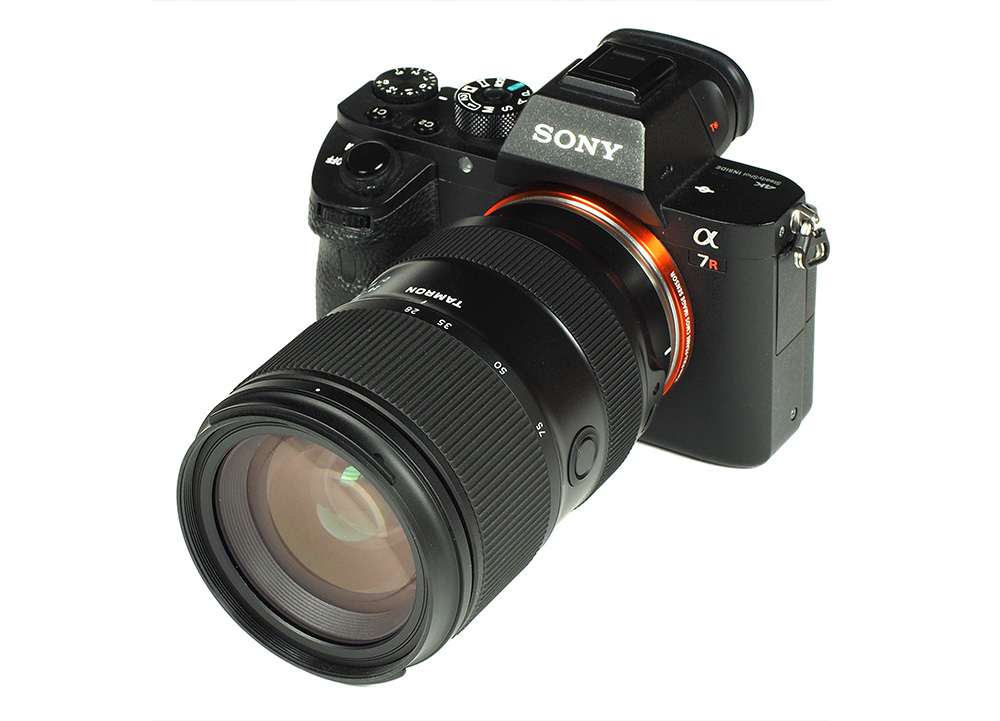Review by Klaus Schroiff, published October 2022
Introduction
Lately, Tamron had quite a run with lots of attractive new products as well as product updates, and a short while ago, they also released the Tamron 28-70mm f/2.8 Di III VXD G2. Despite being popular among consumers, we weren’t overly impressed by their 28-75mm f/2.8 Di III RXD (aka G1) so let’s hope that the G2 is more convincing. Tamron is listing 5 improvements over the “G1” version. Better image quality, better close focus performance, designed body, faster AF and user-customizable functions. Sounds good – on paper – so let’s have a look.
Traditionally, most Tamron lenses had a somewhat plasticy feel to them, and this didn’t really change with the G2 lens. However, the plastic quality seems to have improved somewhat, and the “sculpted” shape looks a bit more premium. Tamron lists the “shinier” finish as an advantage. The zoom and focus rings operate smoothly (and smoother compared to the G1). The G2 lens is moisture resistant, although it isn’t clear whether it’s also dust resistant. Just like most standard zoom lenses, the inner lens tube extends when zooming towards the long end of the zoom range. The Tamron lens no longer features a dedicated focus switch. Instead, they moved a customizable button – which can act as a focus switch if configured accordingly. This can be configured via a USB cable and Tamron’s “Lens Utility” software. A petal-shaped lens hood is part of the package.

The G1 lens with its RXD (Rapid eXtra-silent stepping Drive) had a pretty fast AF already, and the G2 lens is even snappier thanks to its new VXD (Voice-coil eXtreme-torque linear Drive). Tamron claims a speed gain of a factor of 2 and we can see that. Manual focusing is very precise – probably also a benefit of moving from a stepping to a linear motor. An interesting aspect of the G2 lens is also the improved close-focus capability with a max magnification of 1:2.7 at 28mm and 1:4.1 at 75mm. This is quite remarkable for a standard zoom lens. An image stabilizer has not been implemented.
| Specifications | |
|---|---|
| Optical construction | 17 elements in 15 groups inc. 2x aspherical and 2x LD elements |
| Number of aperture blades | 9 (rounded) |
| min. focus distance | 0.18m-0.38m (max magnification: 1:2.7 (WIDE) / 1:4.1 (TELE)) |
| Dimensions | 117.6×75.8mm |
| Weight | 540g |
| Filter size | 67mm |
| Hood | petal-shaped (bayonet mount, supplied) |
| Other features | Fluorine coating, customizable button, moisture-resistant design |
| Mount | Sony FE |
Distortion
Image auto-correction is the de-facto standard today. Activated, you don’t have to worry about distortions as you can see below.
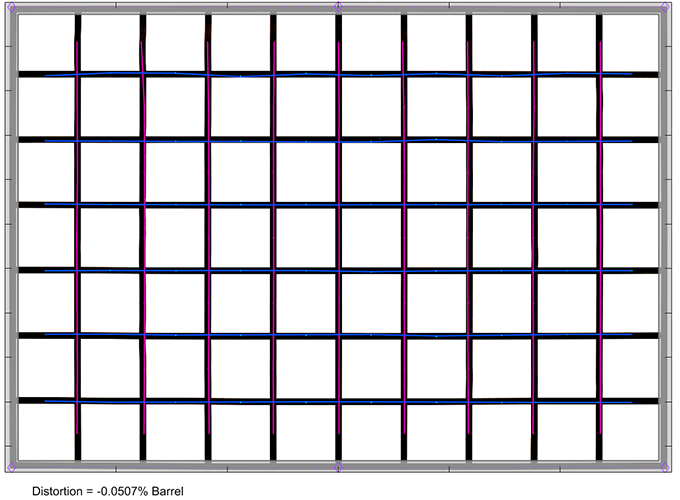
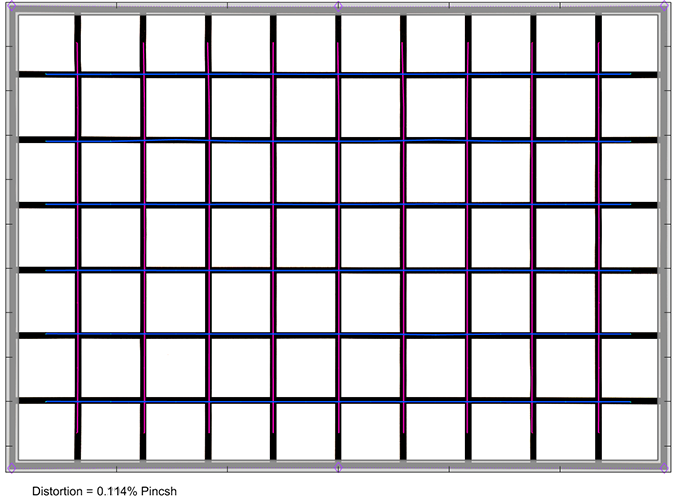
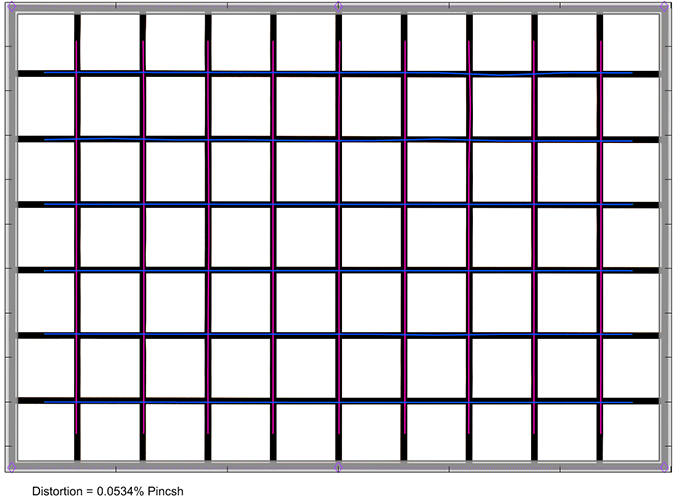
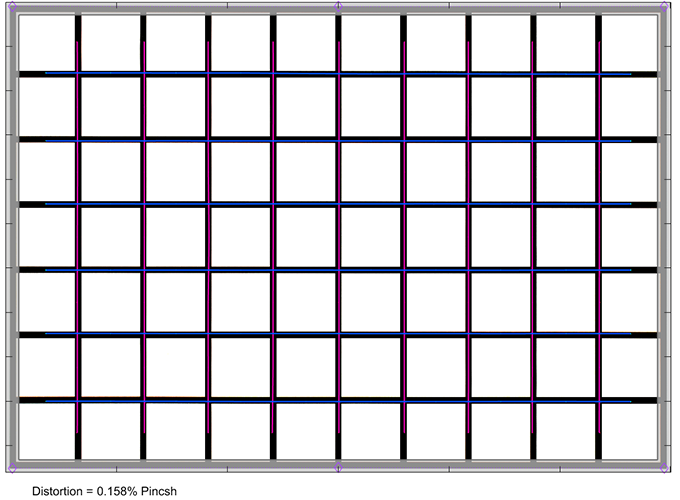
When looking at the RAW characteristic, things aren’t all that rosy anymore. A barrel distortion of ~2.3% at 28mm is actually pretty commendable. The high pincushion distortion in the middle and upper part of the zoom range is much worse than usual – also compared to its predecessor.
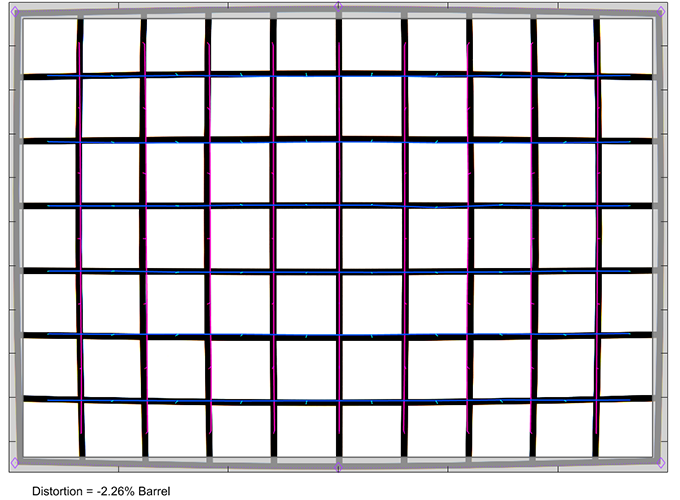
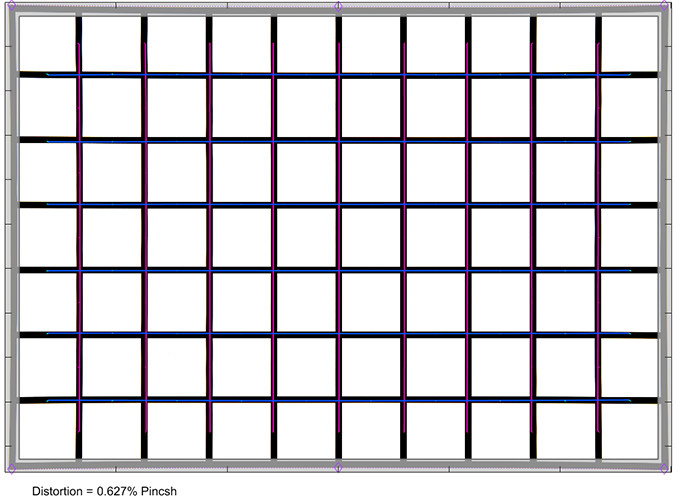
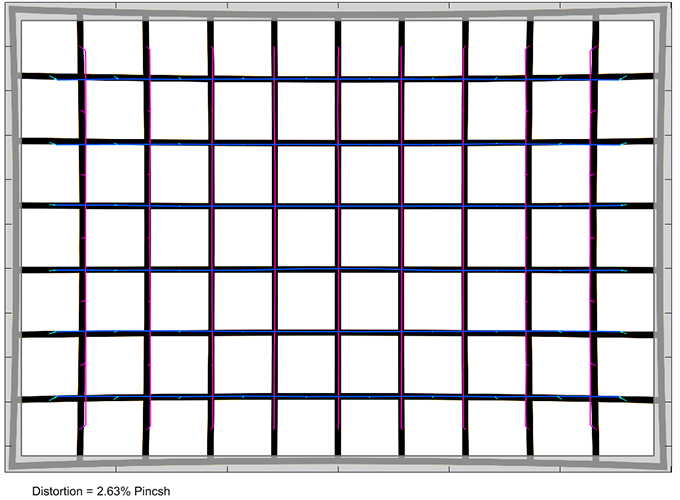
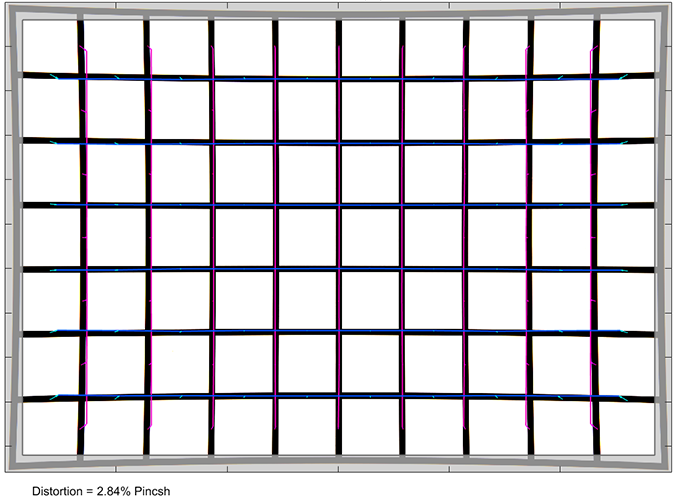
Vignetting
In standard shooting mode (auto-correction activated), the vignetting is well-controlled. There are rather “normal” peaks of around 1.5EV (f-stops) at the extreme ends of the zoom range at f/2.8. However, the light falloff is quite moderate at other settings.

As you may have guessed, the situation is much worse again in the original RAW files. The light falloff reaches ~3EV (f-stops) at 28mm f/2.8 and also 70mm f/2.8. You have to stop down to at least f/5.6 for more sane results. Thus auto-correction is boosting the image signal in the corners by 1.5 f-stops with the corresponding impact on sensor noise.
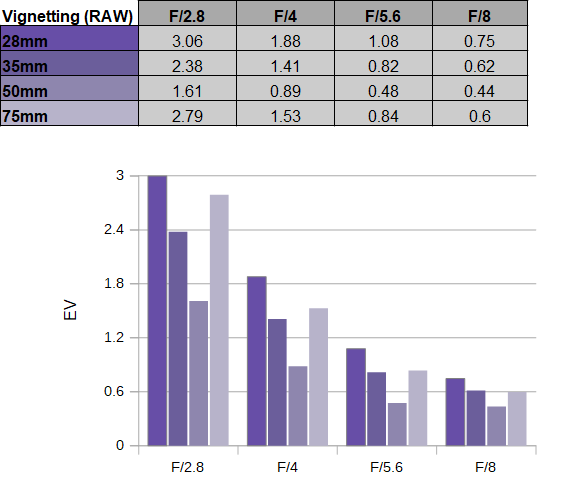
MTF (resolution at 42 megapixels)
While we haven’t seen anything overly impressive so far, the Tamron 28-75mm f/2.8 Di III VXD G2 can deliver impressive image sharpness across most of its range. In terms of balance, Tamron prioritized the wide end of the zoom range – which makes sense. The image quality is great at this setting, with outstanding center sharpness and very good borders/corners. The center performance is maintained at 35mm and 50mm, whereas the quality of the outer image field is slightly reduced. A more noticeable drop in quality is present at 75mm. The center quality is still pretty high, but a very slight softness creeps in at the borders/corners. Given the fact that most users will primarily shoot at f/2.8, this is still a good compromise when looking at the overall characteristic.
The field curvature is low. The centering quality of the tested sample was Ok.
Please note that the MTF results are not directly comparable across the different systems!
Below is a simplified summary of the formal findings. The chart shows line widths per picture height (LW/PH) which can be taken as a measure of sharpness. If you want to know more about the MTF50 figures, you may check out the corresponding Imatest Explanations.

Chromatic Aberrations (CAs)
Once again – on Sony cameras, you don’t really have to worry about chromatic aberrations due to image auto-correction. However, the RAW CAs are comparatively high, peaking beyond 2px on average at the image corners.

Bokeh
If you are in the market for a fast standard zoom lens, you are probably also interested in the quality of the bokeh. And this is a strength of the Tamron 28-75mm f/2.8 Di III VXD G2. Standard zoom lenses don’t deliver smooth out-of-focus highlights like prime lenses, but the Tamron lens comes surprisingly close. The highlight discs are very smooth, with just a hint of nervousness and no obvious outlining.

When looking at the complete image frame, the circular shape of the highlight discs is maintained over a fairly broad field. However, they do deteriorate in the image corners due to mechanical vignetting, as you can see below. Stopping down to f/5.6 recovers most of the circular shape.

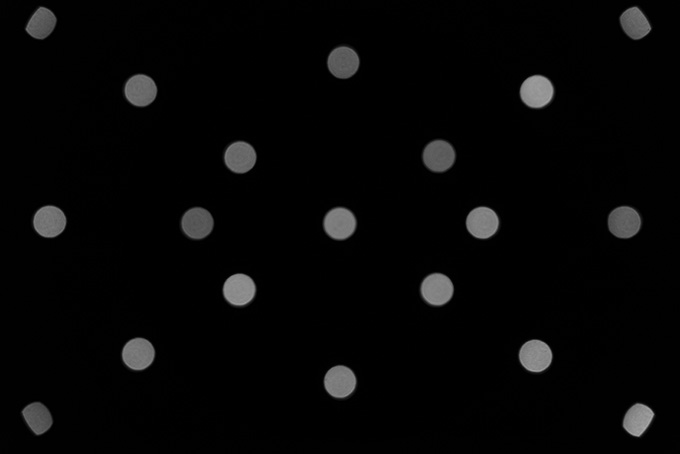

The quality of the general blur is very smooth both in the image background and foreground. That’s a rare quality not only among zoom lenses.

Bokeh Fringing / LoCA
Boheh fringing (also called LoCA) is an axial color fringing effect with purplish halos in front of the focus point and greenish beyond.
The Tamron lens exhibits only moderate fringing at f/2.8, and it’s almost gone at f/4. Once again, a good result.

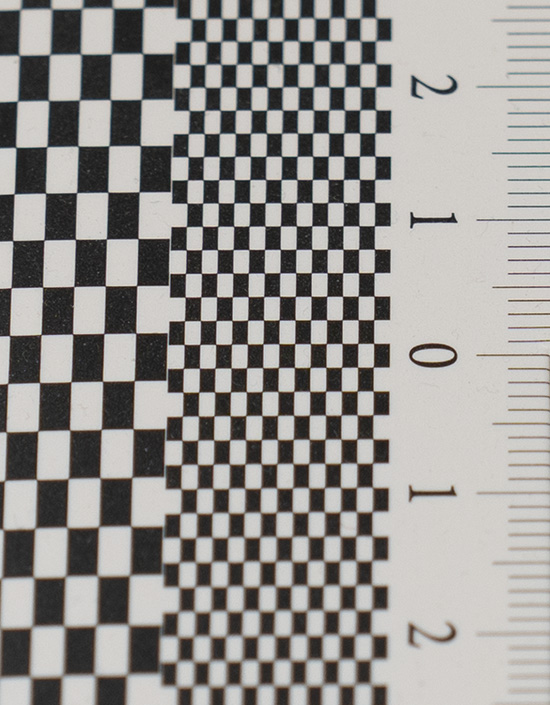
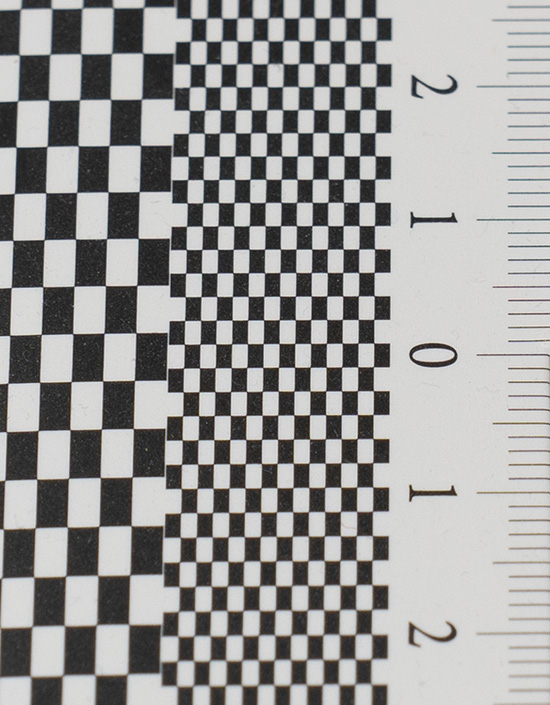
Sun Stars
Below is s sequence of images from f/2.8 all the way up to f/16 – illustrating the Sunstar behavior (using LED lights). Sunstars are an aperture effect when shooting bright light sources such as street lights, the sun, etc. At f/2.8, thus at maximum aperture, the effect is very underdeveloped simply because the aperture is basically circular. The Sunstar effect increases slowly the more you stop down. However, it’s only becoming really obvious from f/11 and it’s best at f/16. When looking closely, the rendering of the rays is a bit fan-like, with distinctive edges. Not optimal, but not bad either.
Note: We are still in a bit of an experimental phase in this image quality category. We have yet to improve the black background of the test target.
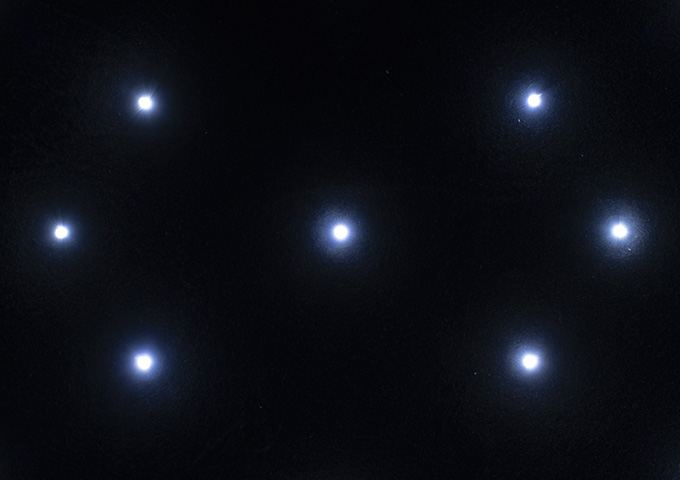
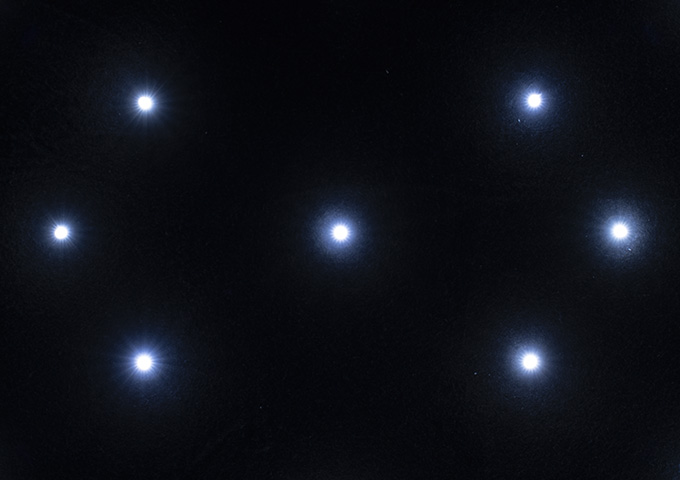
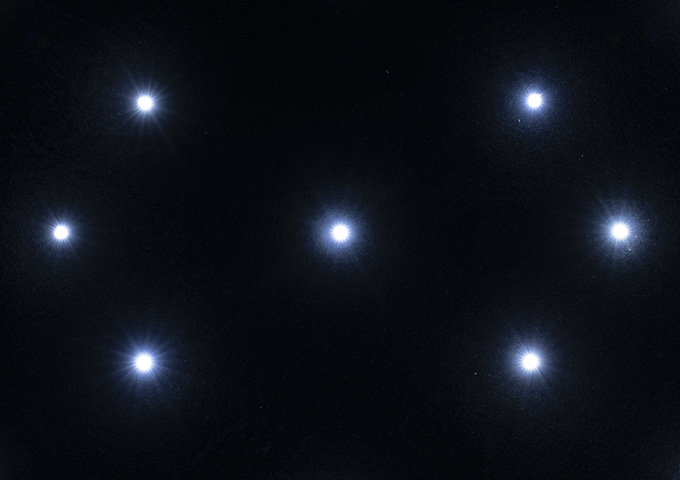
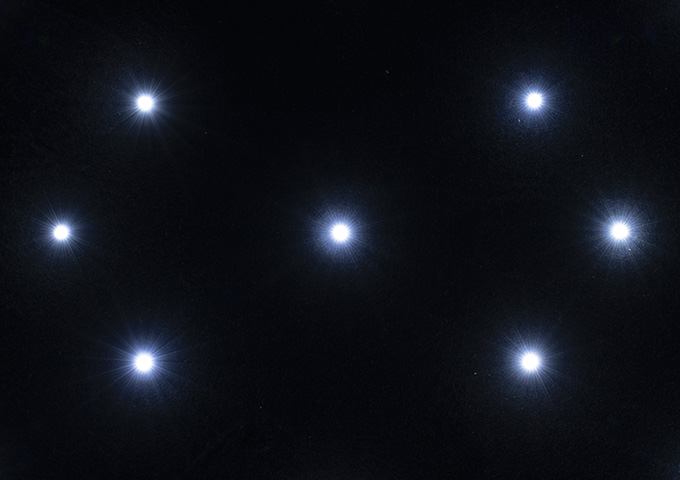
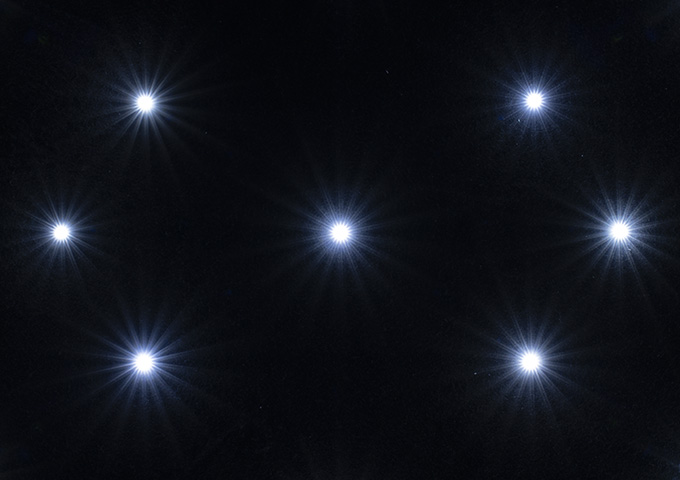
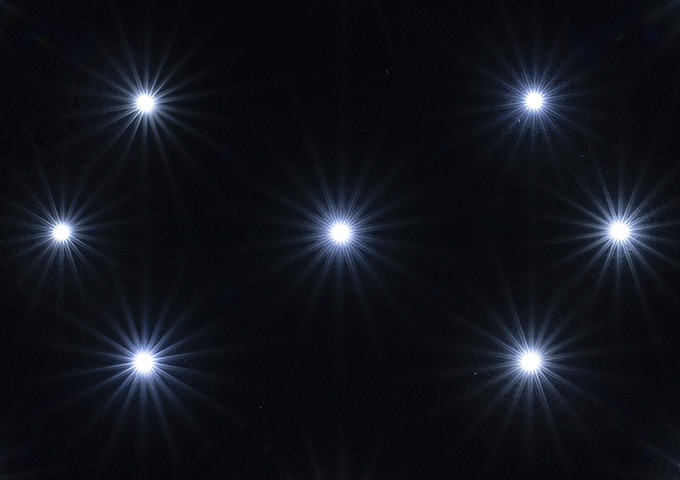
Sample Images
Competition
Sony Alpha is the land of plenty. Not counting legacy and high-end lenses, there are 3 direct competitors for the Tamron 28-75mm f/2.8 Di III VXD G2 (shown to the left below). The most obvious one is the Sigma 28-70mm f/2.8 DG DN Contemporary (2nd left). We haven’t tested this one yet, though. As you may spot, the Sigma lens has been optimized for size. You can probably expect that the Tamron lens can beat this Sigma in terms of optical quality. Sigma has a 2nd lens in this game – the Sigma 24-70mm f/2.8 DG DN Art (2nd right). Overall, the optical rating is fairly similar, albeit with priorities across the focal length range. The Tamron lens emphasizes quality on the wide end, whereas the Sigma is better at the long end. The Art lens does have better build quality, though. A new player is the Samyang AF 24-70mm f/2.8 FE (to the right), the biggest of the bunch here. We can’t really comment on this one, but usually bigger is better. Samyang tends to struggle in terms of manufacturing quality, though. There is, of course, also the Sony FE 24-70mm f/2.8 GM II, but that’s the much more expensive gold standard. If you don’t need an f/2.8 aperture, it’s also worth considering the Sony FE 24-105mm f/4 G OSS.

Visual comparison courtesy of camerasize.com.
So did Tamron up its game in this lens class? Yes, they did. The Tamron 28-75mm f/2.8 Di III VXD G2 is substantially improved over its predecessor in all the critical categories. In terms of sharpness, it is especially impressive at 28mm, where it reaches prime lens levels. The center quality is outstanding at all relevant settings, and the outer image field is easily very good, even at f/2.8. The sharpness decreases slightly the more you zoom out from here. At 35mm and 50mm, the center quality remains excellent, whereas the outer image field decrease to good-very good levels. The 75mm takes a bit of a hit, though. The center quality remains high, but the borders/corners suffer a bit.
Interestingly, the improved overall sharpness was achieved by sacrificing image distortions which are quite a bit higher than on the old lens. Image auto-correction comes to the rescue, of course. That's also necessary for compensating for the very high vignetting, especially at 28mm f/2.8 and 75mm f/2.8. The CAs are also comparatively high for a modern lens. Coming back to more positive aspects, the bokeh is much smoother now. Not only compared to the G1 lens, but it's also better than most other lenses in this class. There is still a bit of bokeh fringing at f/2.8, although it's pretty moderate in the grand scheme of things. It's also obvious that the close-focus image quality has increased.
The build quality still follows a Tamron tradition - meaning the extensive use of plastics. This doesn't translate to bad quality. There's nothing wobbly even when zooming to 75mm and the new design language is quite attractive. However, if you prefer a lens carved from metal, you should look elsewhere. An obvious advantage of this design philosophy is the low(er) weight. Basic weather sealing is also provided. A big plus is the very fast AF from the new VXD linear motor. The option to update the firmware and customize features via USB is also commendable.
While the predecessor was already popular, the Tamron 28-75mm f/2.8 Di III VXD G2 finally deserves a high rank in the sales charts. The price tag of $900/EUR is almost a steal for an f/2.8 standard zoom lens, making it also the value king in this class.
-
Optical Quality
-
Build Quality
-
Price / Performance


